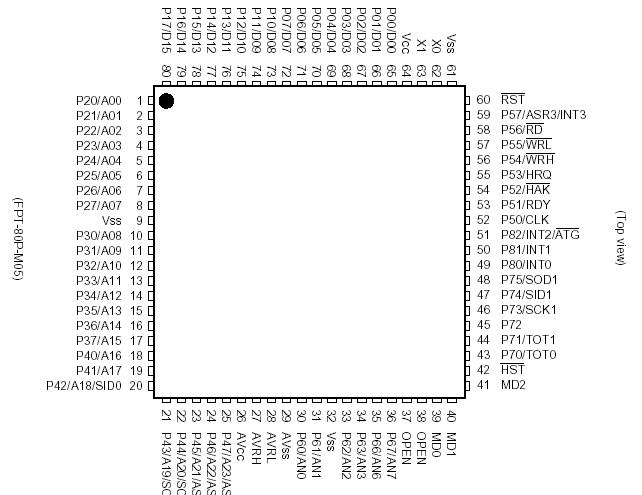winteriscoming
Champion
The rom might give a little insight into some of the protocol:
EDIT: These look like error messages per the error codes listed in the manual.
Not sure if these are debug text or protocol code.
E00.E01.E02.E03.E04.E05.E07.E08.E10.E11.E12.E13.E14.E15.C01.C06.
NO ERROR
.. START
.... OVER FLOW ERROR
.... OVER RUN ERROR
.... FRAMING ERROR
.... PARITY ERROR
.... RAM ERROR
.... VOLUME ERROR (HARD)
.... OVER CURRENT ERROR (HARD)
.... VOLUME ERROR
.... OVER SPEED ERROR
.... MOTOR CURRENT ERROR
.... CURRENT SENSOR ERROR
.... POWER ERROR
.... WATCH DOG ERROR
.... POWER ON
.... POWER OFF
....
I'm guessing some of these are debug text.
SPEED = .
AN0_OFSET = .
AN0 = .
AN1 = .
CURRENT = .
PWM = .
MOTOR FORTH = .
HOME_DATA = .
K_DATA = .
D_DATA = .
R_DATA = .
ST_VR = .
HOME_DATZ = .
P66 = .*.*..
64KB CHECK OK.....
RAM CHECK START
... VOLUME,MOTOR CURRENT CHECK START
... I/O CHECK START
... I/O CHECK OK.....
VOLUME READ OK....
CURRENT SENSOR OK....
HARD SAFETY CHECK START ....
ALL CHECK OK .... END ....
VOLUME ERROR (HARD) OK....
OVER CURRENT ERROR (HARD) OK .... . .
EDIT: These look like error messages per the error codes listed in the manual.
Not sure if these are debug text or protocol code.
E00.E01.E02.E03.E04.E05.E07.E08.E10.E11.E12.E13.E14.E15.C01.C06.
NO ERROR
.. START
.... OVER FLOW ERROR
.... OVER RUN ERROR
.... FRAMING ERROR
.... PARITY ERROR
.... RAM ERROR
.... VOLUME ERROR (HARD)
.... OVER CURRENT ERROR (HARD)
.... VOLUME ERROR
.... OVER SPEED ERROR
.... MOTOR CURRENT ERROR
.... CURRENT SENSOR ERROR
.... POWER ERROR
.... WATCH DOG ERROR
.... POWER ON
.... POWER OFF
....
I'm guessing some of these are debug text.
SPEED = .
AN0_OFSET = .
AN0 = .
AN1 = .
CURRENT = .
PWM = .
MOTOR FORTH = .
HOME_DATA = .
K_DATA = .
D_DATA = .
R_DATA = .
ST_VR = .
HOME_DATZ = .
P66 = .*.*..
64KB CHECK OK.....
RAM CHECK START
... VOLUME,MOTOR CURRENT CHECK START
... I/O CHECK START
... I/O CHECK OK.....
VOLUME READ OK....
CURRENT SENSOR OK....
HARD SAFETY CHECK START ....
ALL CHECK OK .... END ....
VOLUME ERROR (HARD) OK....
OVER CURRENT ERROR (HARD) OK .... . .
Last edited:

 TX and I may be able to reroute communication through the other set if one proves to work and the other doesn't.
TX and I may be able to reroute communication through the other set if one proves to work and the other doesn't.

